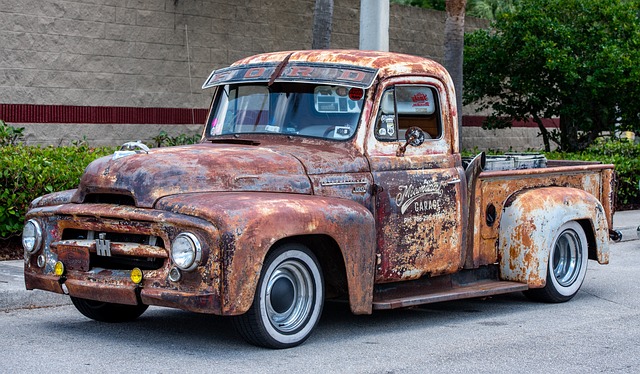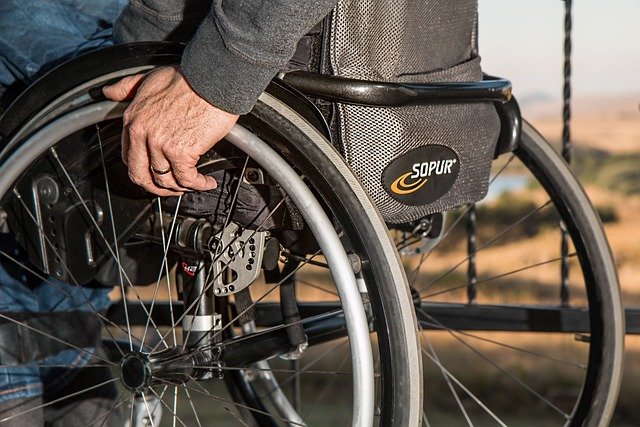Buying an Old Ford Bronco: A Short Guide to Finding, Inspecting, and Purchasing a Classic
The Ford Bronco has earned its place as one of the most sought-after vintage vehicles among collectors and enthusiasts. These rugged, versatile SUVs from the 1960s through 1990s combine timeless design with off-road capability, making them highly desirable in today's classic car market. Whether you're drawn to the first-generation compact models or the larger later versions, understanding what to look for before purchasing can save you time, money, and potential headaches down the road.

Purchasing a classic Ford Bronco requires careful research, thorough inspection, and realistic budgeting. These iconic vehicles have surged in popularity, bringing both opportunities and challenges for prospective buyers navigating a competitive marketplace.
Identifying Authentic Classic Bronco Models and Key Options
Ford produced the Bronco across five generations from 1966 to 1996, with the first generation (1966-1977) being particularly coveted. Early Broncos came in three body styles: roadster, half-cab pickup, and wagon. The second generation (1978-1979) marked a transition to a full-size platform, while subsequent generations (1980-1996) refined the design with updated features and powertrains.
Authentic first-generation Broncos featured specific trim packages like the Sport, Ranger, and Stroppe Baja editions. Key options that affect value include the 289 or 302 V8 engines, factory four-wheel drive systems, and original paint colors. Documentation proving original equipment and matching numbers significantly increases authenticity and market value. Be wary of modified vehicles marketed as original, as many Broncos have been customized over the decades.
What to Inspect: Body, Frame, Engine, and Common Rust Spots
Thorough inspection is essential when evaluating any vintage Bronco. Start with the frame, as structural integrity is paramount. Check for cracks, excessive rust, or previous repair work, particularly around mounting points and crossmembers. The body should be examined for rust in vulnerable areas including door bottoms, floor pans, rear wheel wells, tailgate, and the cowl area below the windshield.
Engine condition varies widely depending on maintenance history. Listen for unusual noises, check for oil leaks, and verify proper operation of all mechanical systems. Original engines are preferable, but well-documented replacements with appropriate period-correct powertrains are acceptable. Inspect the transmission, transfer case, and differential for leaks and proper function. Test the four-wheel drive engagement and ensure all drivetrain components operate smoothly.
Interior condition often reflects overall care. Check for original upholstery, dashboard cracks, and functioning gauges. While cosmetic issues are repairable, original components in good condition add significant value.
Verifying Title, VIN, Ownership History, and Documentation
Proper documentation protects your investment and ensures legal ownership. The Vehicle Identification Number should match all paperwork, including the title, registration, and any service records. Early Broncos used an 11-digit VIN system, while later models adopted the standardized 17-digit format.
Request a complete ownership history and maintenance records. Multiple owners aren’t necessarily problematic, but gaps in documentation may indicate issues. A clean title is essential, though some states issue salvage or rebuilt titles for vehicles that underwent significant restoration. Understand your state’s regulations regarding vintage vehicle titles before purchasing.
Consider obtaining a vehicle history report to check for accidents, liens, or theft records. For valuable first-generation models, expert authentication services can verify originality and detect fraudulent VIN stamps or altered documentation.
Estimating Restoration, Repair, and Ownership Costs
Budgeting realistically for a classic Bronco involves more than the purchase price. Restoration costs vary dramatically based on condition and desired outcome. A basic mechanical refresh might require several thousand dollars, while a complete frame-off restoration can exceed the vehicle’s market value.
| Service Category | Typical Cost Range | Notes |
|---|---|---|
| Basic mechanical service | 2,000 - 8,000 USD | Engine tune-up, brake work, fluid services |
| Bodywork and rust repair | 5,000 - 20,000 USD | Depends on extent of corrosion |
| Complete paint job | 3,000 - 15,000 USD | Quality and prep work affect pricing |
| Interior restoration | 2,000 - 10,000 USD | Upholstery, carpet, dashboard repair |
| Frame-off restoration | 30,000 - 80,000+ USD | Complete disassembly and rebuild |
Prices, rates, or cost estimates mentioned in this article are based on the latest available information but may change over time. Independent research is advised before making financial decisions.
Ongoing ownership costs include insurance, which may be lower through specialty classic car policies, maintenance parts, and storage. Fuel economy is modest by modern standards, typically ranging from 10-15 miles per gallon depending on engine and driving conditions.
Where to Search and Tips for Safe, Successful Purchases
Classic Broncos appear through various channels, each with advantages and considerations. Online marketplaces like Bring a Trailer, Hemmings, and ClassicCars.com offer nationwide reach and detailed listings. Local classified ads and enthusiast forums sometimes yield hidden gems at better prices. Classic car auctions provide opportunities but require quick decisions and often involve buyer premiums.
Specialty dealers focusing on vintage Ford vehicles offer curated inventory, though prices typically reflect their expertise and overhead. Private sales may offer better value but require more due diligence. Regardless of source, never purchase sight unseen without professional inspection.
Join Bronco enthusiast communities and clubs for insider knowledge, market trends, and potential leads on vehicles before they reach public listings. Networking with other collectors often reveals the best opportunities. When negotiating, research comparable sales to establish fair market value. Be prepared to walk away if inspection reveals undisclosed problems or if the seller cannot provide adequate documentation.
Bring a knowledgeable mechanic or Bronco specialist to inspect any serious purchase candidate. The cost of professional pre-purchase inspection is minimal compared to discovering expensive problems after purchase. Verify all claims about originality, modifications, and condition through documentation and physical examination.
Conclusion
Acquiring a classic Ford Bronco represents both an investment and a passion project. Success requires patience, research, and realistic expectations about condition and costs. By carefully identifying authentic models, conducting thorough inspections, verifying documentation, budgeting appropriately, and purchasing through reputable channels, you can find a vintage Bronco that provides years of enjoyment and potentially appreciates in value over time.




